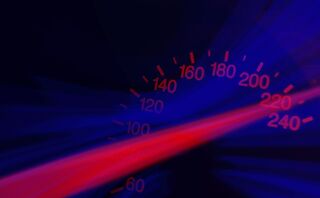Anger
How to Prevent Anger From Becoming Road Rage
Safety strategies to avoid dangerous driving
Posted June 20, 2021 Reviewed by Kaja Perina
Key points
- Many people with documented driving anger do not see themselves as having a problem.
- Beyond merely driving while angry, road rage includes maladaptive behavior.
- Although progress impediment is the most common scenario triggering anger, perceived discourtesy prompts the most intense rage.
Road rage is not only dangerous, it can be deadly. With reports ranging from property damage to homicide, people want to know how to protect themselves from angry drivers. At one end of the spectrum, although we recognize that driving with a loaded gun is already inherently dangerous, we are also concerned with provocation. Whether reacting to the negligence of other drivers, such as an accidental lane change without signaling, or intentional displays of aggression, some angry drivers are like dry tinder waiting to spark. Sure enough, researchers have tied road rage to not merely emotion, but the failure to control negative emotion--which leads to dangerous behavior.

Driving While Angry
Bjureberg, J. and Gross, J.J. (2021) in an article aptly entitled “Regulating Road Rage” [i] discuss the association between road rage generation and road rage regulation. Utilizing a framework of emotion regulation, they discuss situations where difficulties with regulating emotion can prompt road rage, as well as proposed strategies to diffuse these difficulties.
They note that the United States National Highway Traffic Safety Administration has estimated that approximately 67% of crash fatalities involve aggressive driving. A more recent meta-analysis linked angry driving with traffic collisions. Consequently, they proposed a working definition of road rage as “a form of fairly intense behaviorally maladaptive anger often cued by driving-related stimuli while operating a vehicle or riding in one as a passenger.”
What makes road ragers angry? Bjureberg and Gross explain that some drivers may become angry with something most of us have observed firsthand over the last several years—driving while texting or otherwise distracted. Swerving, erratic drivers changing lanes without signaling, often cutting right in front of us can generate negative emotions ranging from frustration, to fear, to anger. But most people would not resort to road rage. What makes the difference?
Bjureberg and Gross recognize that many people with documented driving anger do not see themselves as having a problem. They note that this is problematic, because failing to view anger as a personal problem indicates low readiness for change.
Does anger always cause someone to drive aggressively? The answer appears to be sometimes, but not always.
When Angry Driving Causes Angry Behavior
Many reckless drivers are not angry, just bad drivers. Bjureberg and Gross note that beyond merely driving while angry, road rage includes maladaptive behavior. They report that common triggers include slow drivers that impede progress, risky drivers, lack of courtesy, and (ironically)—hostility. Apparently, although progress impediment is the most common scenario triggering anger, perceived discourtesy prompts the most intense rage. They note other triggers of road rage include warm temperatures, having a weapon in the car, time constraints, stress, and traffic.
Reducing Road Rage
People prone to bad behavior behind the wheel should avoid driving while angry. Other ideas suggested by Bjureberg and Gross include carpooling and relying on public transportation. If a person prone to anger must get behind the wheel, they suggest distractions such as listening to pleasant music, a favorite podcast, or focusing on the scenery outside the car (assuming the individual is not sitting in traffic—another stressor).
What if you are in the passenger seat? Be the cool-head in the car. Encourage safe driving through modeling calm behavior designed to facilitate and encourage emotional de-escalation, using distraction, humor, or anything else that will enhance situational safety. And depending on how well you know the angry driver, maybe you can choose an alternate ride next time.
References
[i] Bjureberg, J. and Gross, J.J. (2021), Regulating road rage. Soc Personal Psychol Compass, 15: e12586. https://doi-org.libproxy.sdsu.edu/10.1111/spc3.12586.


